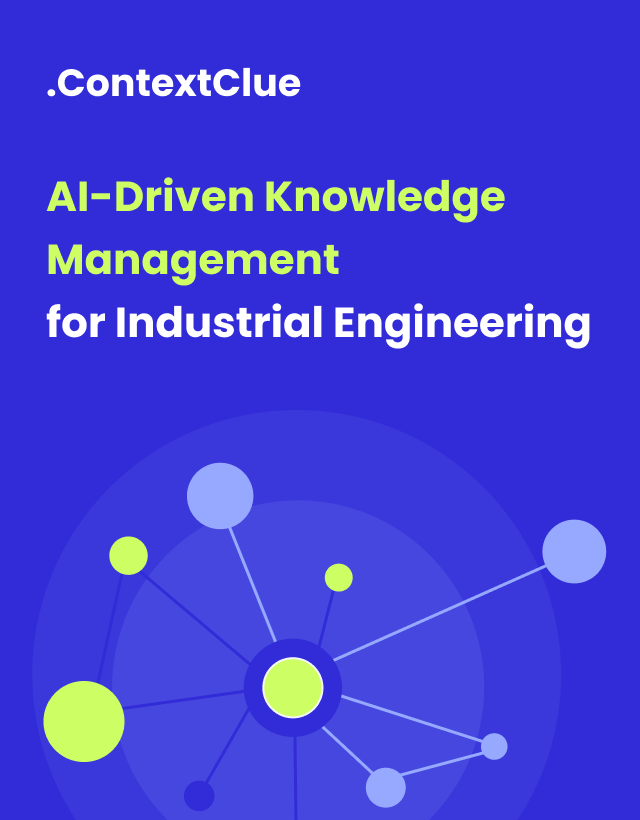
October 23, 2025
How to Choose the Right AI Company To Work With?
Author:

Reading time:
14 minutes
When ChatGPT made headlines, thousands of IT companies overnight rebranded themselves as “AI-first” consultancies.
For executives seeking genuine transformation, this gold rush has made choosing the right AI consulting partner harder than ever. The question isn’t just “Can they build AI?” but “Can they deliver measurable business value without the typical high failure rate?”
After delivering over 100 production AI systems across 10+ industries, we’ve seen what separates consulting theater from real implementation expertise.
Here’s what you actually need to evaluate.
Warning Signs of AI Consulting “Theater”
1. They Lead with Technology, Not Business Outcomes
What you’ll often hear:
“We specialize in GPT-4, Claude, LLaMA, and cutting-edge transformer architectures…”
In most cases, that pitch is about technological sophistication—not business outcomes.
What to look for instead:
Consultants who begin by asking about your operational bottlenecks, revenue constraints, and cost drivers. The right partner brings up technology only after understanding your business context.
When we work with clients, our discovery phase focuses entirely on business impact.
For example, with InPost, we didn’t start with “Which AI model should we use?”
We started with “What’s costing you the most due to forecast inaccuracy?” The machine learning model came later, and it integrated historical data, macroeconomic trends, and third-party inputs not because they were technically impressive, but because they directly addressed the business problem.
They Promise “AI Transformation” Without Defining Success Metrics
Red flag phrases:
- “AI will revolutionize your business”
- “Unlock the power of artificial intelligence”
- “Transform your operations with AI”
These sound impressive – but they usually mean, “we don’t actually know what success looks like.”
Too many AI projects falter not because the technology underperforms, but because the objectives are undefined and the data foundation is weak. When outcomes like “better forecasting” or “greater efficiency” aren’t backed by measurable targets, projects lose direction – and business impact evaporates.
What genuine partners do:
They begin with clarity. Before any technical work starts, they define specific, measurable outcomes that tie directly to business value. Instead of buzzwords, they commit to concrete metrics – accuracy rates, cost reductions, process speed gains—so everyone knows exactly what success means and how it will be proven.
They Don’t Ask Hard Questions About Your Data
If a consulting company doesn’t thoroughly examine your data quality, accessibility, and governance during the initial conversations, run.
AI systems are only as good as the data they’re trained on, and data problems are the number one cause of AI project failure.
Questions they should be asking:
- How consistent is your data across systems?
- What’s your current data governance structure?
- Where does your data live, and who controls access?
- How clean and complete is your historical data?
- What are your data security and compliance requirements?
They Push “Proof of Concept” Without a Production Plan
Here’s an uncomfortable truth: the AI consulting industry is plagued by impressive demos that never make it past the pilot phase.
PoCs are valuable, sure, but only when they’re designed as validation milestones within a comprehensive roadmap, not as end goals.
Warning signs:
- No discussion of scalability requirements during PoC design
- PoC uses cleaned, preprocessed demo data rather than real operational data
- No clear timeline or budget for moving from PoC to production
What production-ready consulting looks like: Every PoC we design includes core functionality demonstration aligned with production requirements, scalability validation ensuring smooth transition to full deployment, integration testing with existing systems, success metrics tied directly to business objectives, and a production migration plan with clear timelines and resource requirements.
For our aviation documentation system, the PoC wasn’t just “can GPT-4 generate safety reports?” It was “can this system handle variable document formats, maintain regulatory compliance, integrate with existing AWS infrastructure, and operate with the reliability required for aviation safety?”
All addressed before full deployment.
What Genuine AI Consulting Expertise Looks Like
1. They Have Production-First DNA, Not Academic Credentials
Impressive research papers and PhD teams sound good in sales decks. But production AI systems often face challenges that academic environments never replicate:
Ask potential partners to describe their team composition. You don’t just need data scientists – you need data engineers who architect scalable data pipelines, MLOps specialists who ensure model reliability and monitoring, and infrastructure experts who handle enterprise-grade deployment requirements.
Our team includes all of these experts because we learned early that getting a model to 95% accuracy in a notebook is 20% of the work.
The other 80% is making it work reliably in production environments where data is messy, systems are complex, and failure has real business consequences.
2. They Know When to Choose the Right Tool – Not Just the Hottest One
“AI” is an umbrella term covering vastly different technologies, and choosing the right approach for your specific problem is half the battle.
The best AI consultants don’t have a favorite hammer that makes every problem look like a nail.
They understand the full spectrum of AI technologies – from classical machine learning and statistical methods to natural language processing, computer vision, and yes, large language models (LLMs) and they choose based on your business requirements, not what’s trending on tech news.
Real example from our work: For an aircraft turnaround optimization project, we deliberately chose classical statistical algorithms over state-of-the-art neural networks. Why? Because when applied properly, old-school statistical methods delivered matching results at a fraction of the cost compared to complex AI models.
As our data scientist Jakub Berezowski put it:
“We deliberately chose simplicity over complexity in selecting algorithms, as it turned out that classical, we can say even old-school statistical algorithms, when applied well, deliver matching results at a fraction of the cost.”
Not every problem needs a large language model. In fact, LLMs – despite the hype – are often the wrong choice:
- When you need structured data extraction from documents: Classical NLP with rule-based extraction might give you 95% accuracy at 10% of the cost of an LLM-based solution
- When you need predictive analytics: Traditional machine learning algorithms (random forests, gradient boosting) often outperform deep learning for tabular data—and they’re explainable
- When you need real-time processing: Lightweight ML models can run on-device with millisecond latency, while LLM calls add network overhead and cost
- When you need deterministic outputs: Rule-based systems combined with classical ML give you consistency; LLMs introduce variability
The InPost case: For demand forecasting we used traditional machine learning models specifically designed for time-series forecasting, incorporating historical data, macroeconomic indicators, and seasonal patterns. The result? Production-grade accuracy with predictable costs and explainable predictions that business stakeholders could trust.
The retail computer vision case: For ingredient extraction from product labels, we combined convolutional neural networks (CNN) for image processing with OCR and classical NLP techniques. No LLM needed, and we achieved 91% accuracy with a solution that runs cost-effectively at scale.
Questions honest consultants ask before recommending technology:
- How important is explainability? (Traditional ML vs. deep learning)
- What’s your latency requirement? (On-device models vs. cloud APIs)
- What’s your cost tolerance per prediction? (Lightweight models vs. large models)
- Do you need deterministic outputs? (Rule-based systems vs. probabilistic models)
- How much training data do you have? (Deep learning vs. traditional ML)
Red flag: Consultants who immediately propose LLM-based solutions for every problem. They’re either riding the hype wave or lack the technical depth to match the right technology to your problem.
Green flag: Consultants who walk you through the technology trade-offs specific to your use case and explain why they’re recommending one approach over another, including when they recommend simpler, cheaper solutions over cutting-edge models.
The ROI reality: Sometimes, the “boring” technology, classical machine learning, rule-based NLP, and traditional computer vision, delivers better ROI than the latest large language model.
A good AI consultant knows this and isn’t afraid to tell you that the less glamorous solution might be the right one for your business.
3. They Have Proprietary Tools That Accelerate Time-to-Value
Consultants who have built their own AI frameworks and tools can deliver production-ready solutions in weeks rather than months.
This is why we developed ContextClue (a modular agentic AI framework) and ContextCheck (AI governance and hallucination detection).
These aren’t just internal tools; they represent years of production learning condensed into reusable, proven components.
Why this matters for you: You’re not paying for the same groundwork to be laid every time. You’re leveraging battle-tested components that have already proven reliability in production environments.
Red flag: Consultants who build everything from scratch for each client. You’re subsidizing their learning curve.
Green flag: Consultants with proprietary accelerators who can demonstrate how their tools reduce implementation time while maintaining customization flexibility.
4. They Address the “Production Gap” Explicitly
Most AI systems fail in the treacherous transition from “it works in the demo” to “it works every day in your business operations.”
The right consulting partner understands these AI-specific production challenges:
Data pipeline reliability at scale: Demo environments use clean, preprocessed data. Production AI requires robust data pipelines handling inconsistent, real-world inputs. For our aviation client, this meant processing varied document formats from different airlines with different naming conventions, character encodings, and quality levels, with automated data validation, format standardization, and error handling.
Regulatory requirements for AI differ from traditional software. This means audit trails for AI decision-making, bias detection in model outputs, and compliance reporting. For regulated industries, you need explainability features that document how specific AI decisions were reached.
Unlike traditional applications where bugs are predictable, AI systems can generate plausible but incorrect outputs. Production systems need multi-layer validation: semantic consistency checks, factual verification against known data sources, confidence scoring, and human-in-the-loop validation for low-confidence outputs.
Traditional software performs consistently; AI models degrade over time. Production solutions must include real-time performance monitoring, accuracy degradation tracking, data drift detection, and automated retraining triggers.
AI solutions must work within existing IT ecosystems that weren’t designed for AI workloads-handling API rate limiting for LLM calls, batch processing requirements for large document sets, and data security requirements that may prevent cloud-based processing.
5. They Provide Actionable Consulting with Feasibility Guarantees
The right partner doesn’t just give you recommendations, they guarantee those recommendations can be successfully implemented.
What this means in practice:
When we recommend AI-powered document processing to address manual invoice processing costs, we deliver:
- Detailed technical specifications for the exact solution architecture – guaranteed to work
- Step-by-step implementation guide your team can follow with assured success
- Resource requirements and timeline estimates backed by proven experience
- Integration blueprints tested against your specific systems and constraints
- Proof of concept design when validation is needed, but always as a strategic step toward full production deployment
You can choose to implement internally, hire contractors, or engage our implementation services, but regardless of execution path, we guarantee the technical feasibility of our recommendations.
This is fundamentally different from traditional consulting that ends with PowerPoint presentations and “good luck with implementation.”
The Evaluation Framework: Questions to Ask Potential Partners
About Their Production Experience
- “How many of your AI projects are currently running in production environments?”
- Look for specific numbers, not percentages
- Ask for case studies with approaches and outcomes presented in details
- Verify if these are truly production systems handling real business processes, not perpetual pilots
- “Can you describe a project where you recommended against using the latest AI technology in favor of a simpler approach?”
- This reveals technology-agnostic thinking and business judgment
- Partners who always recommend the newest, most expensive technology are selling hype, not solutions
- “What happened to your last three ‘failed’ projects and why?”
- Everyone has failures; how they learned from them matters
- Consultants who claim 100% success are either lying or haven’t done enough projects
About Their Methodology
- “Walk me through your discovery process.”
- Should start with business outcomes, not technical capabilities
- Should include extensive data quality assessment
- Should involve stakeholders beyond IT
- Should include honest readiness assessment
- “How do you decide which AI technology to use for a given problem?”
- Should discuss trade-offs between different approaches
- Should mention cost, performance, explainability, and maintenance considerations
- Should reference specific examples where they chose simpler over more complex solutions
- “How do you handle the transition from proof of concept to production?”
- Should have a clear, documented process
- Should address scalability from day one
- Should include specific success criteria and migration timeline
- “What happens if your recommended solution doesn’t work?”
- Look for accountability, not blame-shifting
- Should have mitigation strategies built into the approach
About Technical Capabilities
- “What’s your team composition for a typical project?”
- Should include data engineers, MLOps specialists, not just data scientists
- “Do you have proprietary tools or frameworks, and how do they accelerate our project?”
- Proprietary IP demonstrates production learning
- Should explain how it reduces your cost and risk
- Should still allow for customization to your needs
- “How do you handle AI-specific challenges like model drift, hallucinations, and governance?”
- Should have specific, technical answers
- Should reference real implementations, not theoretical approaches
About Business Alignment
- “How do you measure ROI, and what success looks like for this engagement?”
- Should define specific, measurable outcomes
- Should connect technical metrics to business value
- Should be willing to be held accountable to these metrics
- “What’s your typical stakeholder engagement process?”
- Should involve business leaders, not just IT
- Should include change management considerations
- Should address user adoption explicitly
Making the Decision: A Practical Checklist
Use this evaluation matrix when comparing AI consulting partners:
Production Credibility
- Case studies with specific, measurable outcomes and approaches described
- Client references from your industry or comparable complexity
- Team includes data engineers and MLOps specialists, not just data scientists
Methodology Rigor
- Business-outcomes-first discovery process
- Extensive data quality and readiness assessment
- Clear production pathway from every PoC
- Technology-agnostic approach that considers the full AI spectrum
- Examples of recommending simpler solutions over complex ones
Technical Capability
- Proprietary frameworks or tools demonstrating production learning
- Expertise across multiple AI technologies (not just LLMs)
- Specific approaches to AI-specific challenges (drift, hallucinations, governance)
- Integration expertise with enterprise systems
- Multi-cloud and on-premises deployment experience
Business Alignment
- Defined success metrics before technical work begins
- Stakeholder engagement beyond IT department
- Change management and adoption strategy
- Feasibility guarantee for all recommendations
Engagement Value
- Actionable deliverables you can execute with or without their implementation support
- Clear timeline with specific milestones
- Transparent pricing with deliverable commitments
- Knowledge transfer, ensuring your team builds capability
The Bottom Line: Choose Partners Who Match Technology to Problems, Not Problems to Technology
The AI consulting landscape is cluttered with firms that pivoted overnight from software development, when ChatGPT made headlines.
The difference between consulting theater and production expertise comes down to one question: Will they stake their reputation on the feasibility of their recommendations, and will they choose the right technology for your specific problem?
The right AI consulting partner:
- Starts with your business problems, not their technical capabilities
- Understands that “AI” encompasses many different technologies with different trade-offs
- Tells you honestly when simpler, cheaper approaches will work better than cutting-edge models
- Designs every PoC as a step toward production, not an end goal
- Guarantees that their recommendations can be successfully implemented
- Provides actionable plans, whether you implement internally or with their support
After years building production AI systems across the full technology spectrum, from classical machine learning to large language models, we’ve learned that the consulting firms worth your investment are those who understand that impressive demos mean nothing if they can’t survive contact with real business operations, and that the best technology is the one that solves your problem most cost-effectively, not the one generating the most headlines.
Choose a partner who’s accountable for production results and who has the technical depth to recommend the right tool for your job, not just the hottest one.
The difference between companies delivering measurable AI value and those that fail often comes down to choosing the right consulting partner. Don’t let impressive credentials and technology buzzwords distract from what matters: production-proven expertise with accountability for results.
Category:






